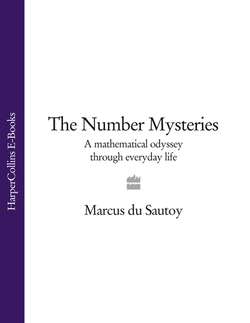Читать книгу The Number Mysteries: A Mathematical Odyssey through Everyday Life - Marcus Sautoy du - Страница 13
Which prime is this?
ОглавлениеFIGURE 1.06
Some of the first mathematics in history was done in Ancient Egypt, and this is how they wrote the number 200,201. As early as 6000BC people were abandoning nomadic life to settle along the river Nile. As Egyptian society became more sophisticated, the need grew for numbers to record taxes, measure land and construct pyramids. Just as for their language, the Egyptians used hieroglyphs to write numbers. They had already developed a number system based on powers of 10, like the decimal system we use today. (The choice comes not from any special mathematical significance of the number, but from the anatomical fact that we have ten fingers.) But they had yet to invent the place-value system, which is a way of writing numbers so that the position of each digit corresponds to the power of 10 that the digit is counting. For example, the 2s in 222 all have different values according to their different positions. Instead, the Egyptians needed to create new symbols for each new power of 10:
FIGURE 1.07 Ancient Egyptian symbols for powers of 10. 10 is a stylized heel bone, 100 a coil of rope and 1,000 a lotus plant.
200,201 can be written quite economically in this way, but just try writing the prime 9,999,991 in hieroglyphs: you would need 55 symbols. Although the Egyptians did not realize the importance of the primes, they did develop some sophisticated maths, including—not surprisingly—the formula for the volume of a pyramid and a concept of fractions. But their notation for numbers was not very sophisticated, unlike the one used by their neighbours, the Babylonians.
